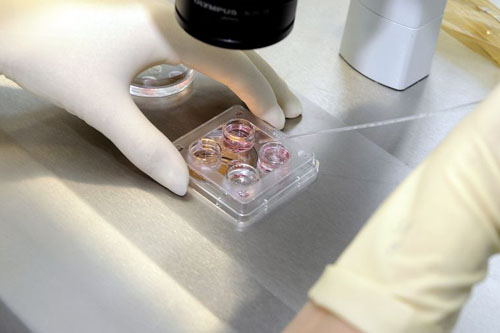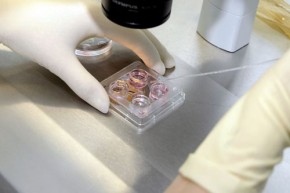The transfer of embryos in the blastocyst state
In a treatment of In Vitro Fertilization, your doctor recommends the day of transfer that offers you the best chances of pregnancy
The transfer of embryos in the blastocyst stage is one of the steps of In Vitro Fertilization. The oocyte inseminates with the sperm in the laboratory. When fertilization occurs, the development of the embryo that will lead to the future baby begins. The blastocyst is the stage of the embryo after 5 or 6 days of development in the so-called process of cell division.
The embryo culture
In an In Vitro Fertilization cycle, the oocyte is inseminated with the sperm in the laboratory. When fertilization occurs, the development of the embryo that will lead to the future baby begins.
That embryo remains in the laboratory between 2 and 6 days, in which it will become an organism composed of several cells ready to implant in the uterus of the future mother.
What is the blastocyst?
The blastocyst is the stage of the embryo after 5 or 6 days of development in the so-called process of cell division. Under natural conditions, it is precisely at this stage that the embryo is ready to implant itself in the endometrium.
No matter how hard we try to recreate conditions similar to the human body, not all embryos get to that stage in the laboratory. Depending on the quality of the oocytes, sperm, and other factors, only some of them will develop to the blastocyst stage.
In which cases is it recommended to perform the blastocyst transfer?
The moment in which the embryo is transferred to the uterus of the future mother depends on each case in particular, and it will be your doctor along with the advice of the embryologist who will indicate if, depending on your situation, it is advisable to opt for a transfer in the state of blastocyst. In this way, the doctor and embryologist will always propose the cycle that best suits you according to your results. Our main objective is to offer the highest chances of pregnancy .
What is the advantage of the blastocyst transfer?
In its blastocyst state, the embryo is more developed and is in the phase corresponding to its implantation in the endometrium. For this reason, the blastocyst has greater chances of pregnancy by transfer, this being one of its main advantages.
In in vitro fertilization treatments with donor eggs , in particular, the embryo transfer of a single embryo in the blastocyst stage is equivalent to the transfer of 2 embryos to day 3.
Thus, in all IVF treatments with own or donor eggs, whenever possible, the embryo transfer will be made when the embryo is blastocyst stage.
Twin pregnancy
We understand that some women want a twin pregnancy. However, from the medical point of view it is not the most appropriate situation. Our task is to seek pregnancy by minimizing the possibilities of complication to the maximum, and with an advice adapted to each patient.
In the transfer of embryos in the blastocyst state, the possibility of a twin pregnancy is considerably reduced, given that with the transfer of a single blastocyst we achieve approximately the same pregnancy rate as with two embryos on day 3 of development, assuming a risk of Minimal twin pregnancy. Thus, we obtain the same pregnancy rate per transfer with a much lower potential for medical complications.


